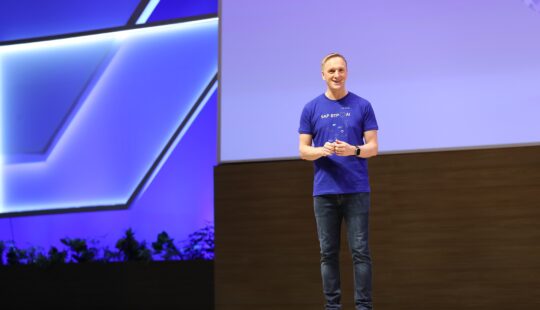When it comes to innovation, easy-to-use application programming interfaces (APIs) are a must-have for developers in heterogeneous software landscapes.
Case in point is the private beta launch of SAP Graph software at the SAP TechEd event last fall. Essentially an API semantic layer on top of the intelligent enterprise suite from SAP, the software is being created to improve the developer experience when working with APIs. I saw a demonstration in this video interview onsite.
“As part of SAP’s intelligent enterprise strategy, we want to provide developers with a set of curated, intuitive, easy-to-understand APIs that they can use to extend innovation on SAP and third-party applications,” said Jan Schaffner, head of Central Engineering at SAP. “With harmonized object names, developers will be able to more efficiently explore, test drive, and ultimately create productive applications, securely connecting and integrating master data across SAP and non-SAP cloud landscapes.”
Making APIs Easy to Consume
Schaffner described SAP Graph as an eventual central entry point for partners and SAP development teams creating applications based on processes across the intelligent enterprise suite.
“With unified API access to core data and functionality for intelligent enterprise processes, developers could quickly reuse what they’ve learned in other SAP solutions, speeding up productivity,” Schaffner explained.
Pilots Make Progress
In some pilot projects, SAP partners are using SAP Graph to create applications around the quote to order process, including SAP Sales Cloud, SAP Commerce Cloud, and SAP S/4HANA Cloud.
One SAP partner used the pilot version of SAP Graph to create a prototype microapps service for developers that would help them build workflows uniting more information from different SAP solutions.
In another proposed scenario, retailers could personalize customer order deliveries using SAP Graph as a unifying layer across existing logistics and customer commerce applications. That example included a conversational user interface (UI), allowing customers to talk with a chat bot to select delivery dates.
“We want to create one domain model for the intelligent suite, which includes data across four main business processes: lead to cash, source to pay, recruit to retire, design to operate,” said Schaffner. “This level of simplified harmonization is designed to help all developers, especially those new to SAP environments, who lack the resources for time-consuming training.”
According to Schaffner, developers involved with the pilot beta version of SAP Graph have shared positive feedback.
“SAP partners are super excited about SAP Graph because it exposes, in a common domain model, a subset of APIs that are most relevant to them,” he said. “This kind of curation will make it easier for developers to build extensions on top of solutions, helping their customers take full advantage of the incredible breadth of SAP business applications as they migrate to SAP S/4HANA and our entire intelligent suite.”
Follow me @smgaler



